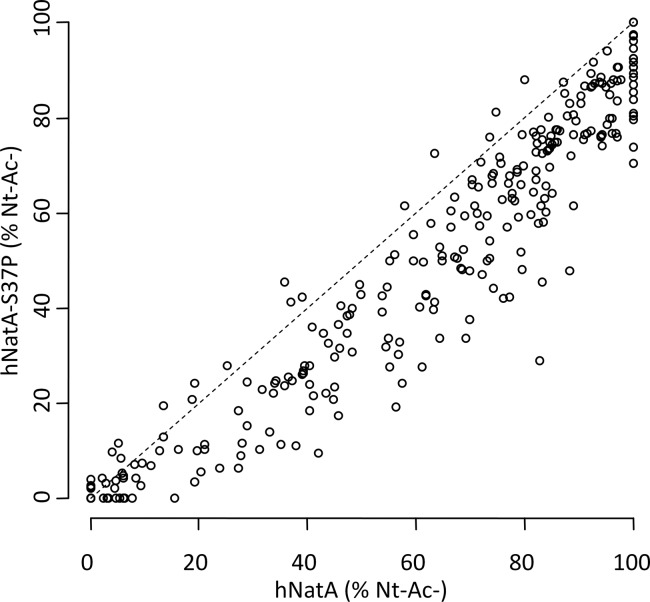Fig. 3.
hNatA S37P expression in yeast significantly reduces the efficiency of NatA-mediated N-terminal acetylation at the proteome-wide level. Scatterplot displaying the correlation of the degrees of Nt-acetylation of the NatA type class N termini (i.e. Ser-, Ala-, Thr-, Val-, and Gly- starting N termini). Correlation of the degrees of Nt-acetylation of the determined NatA type class N termini identified in the yeast N-terminomes of a human NatA (hNatA) expressing strain (X-axis) and a S37P mutant human NatA (hNatA S37P) expressing strain (Y-axis) (n = 347). Only in 6.3% of the cases, the S37P mutation causes an increased degree of Nt-Ac as compared with the wild type hNatA whereas in 24.5% about equal levels of Nt-Ac (less than 10% difference in the degree of Nt-Ac) could be observed and thus for the majority of NatA-substrates (69.2% of NatA type N termini), the S37P mutation causes a decrease in the levels of Nt-Ac.

